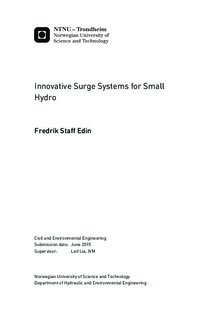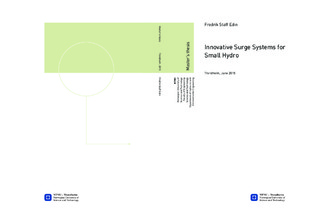| dc.description.abstract | The Nordic grid quality is stated to be unsatisfactory in regards to the quality of frequency. The increasing amount of unregulated hydropower, interconnecting cables and increased flow of power on the grid are reasons given by Statnett SF (2014).
If the stability of the grid is to be improved, small hydropower plants may be required to provide stable energy to the grid, a requirement that small hydropower plants have been exempt from.
Achieving regulation stability for small hydropower is found to be achievable with the same toolkit as is used for large hydropower. Open or closed surge chamber, increased conduit area, increased amount of rotating masses and heating elements or modern variants of such as hydrogen production are all transferable to small hydropower. In addition a responsive bypass valve is proposed as a new solution which will achieve regulation stability at the cost of water loss.
The optimal solutions will vary for every hydro power plant and is very dependent on the hydrology, topography and the design choices of the hydro power plant. This master thesis studies two cases, Usma (9.98 MW) which is an existing power plant and Storvatnet (1.4 MW) which has received its license. Both cases may be required to achieve regulation stability if the legislation regarding small hydro power plants are changed. A generalized method for achieving regulation stability is proposed and used for the two cases.
A key financial ratio is proposed as a comparison tool for power plants which are required to achiever regulation stability. The additional cost of achieving regulation stability is divided by the total amount of provided power in kWh.
For Usma a closed surge chamber solution in steel was found to be the optimal solution. The cost of regulation stability for Usma were found to be 0.26 NOK/kWh which will result in 5 % of the total cost of the power plant. For the second case, Storvatnet, the cost of regulation stability for was found to be 0.06 NOK/kWh where the optimal solution were a closed surge chamber made in steel. These two cases were compared to an estimated cost of an existing large hydropower plant, Tonstad which has four closed surge chambers estimated at a cost of 0.08 NOK/kWh. | |

